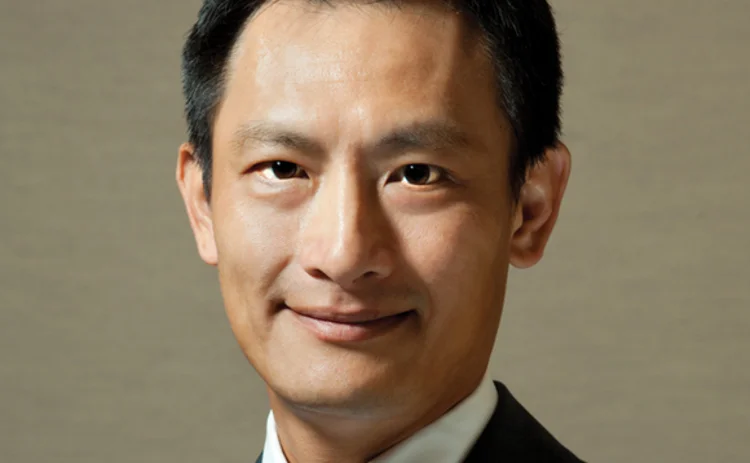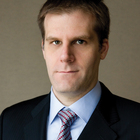
Structured Products House of the Year: Nomura
Asia Risk awards 2011 winner: Nomura – Structured Products House of the Year

Nomura has seen its structured products business grow at a rate that would make most banks envious. While holding outright dominance in one of the region’s largest markets, Japan, and forging a similar position in Korea, the Japanese dealer is breaking ground with innovative deals in newer markets, paving the way for further growth into domestic flow structures and other business lines.
Nomura holds a 43% share of the uridashi market, which is how most non-OTC Japanese investors access structured products in Japan. Meanwhile, as a distributor, Nomura holds a 30% share of the Japanese retail market. This has helped the dealer to capture one of the region’s biggest trends – Japanese investors buying non-Japan products for yield enhancement – via products such as its emerging market double bull/bear series, which offers leverage in a fund format.
In 2011, Nomura also launched both the largest dual-currency structured uridashi trade (also the third largest structured deal ever) and the second largest equity-linked uridashi ever. The first of these deals featured Norway’s Kommunalbanken as the issuer and Nomura as the sole bookrunner and lead manager offering two tranches and raising $681 million. The first tranche was structured as a knock-in, dual-currency note, while the second was structured as a target-buying dual cross-currency note – effectively a kind of accumulator. It was first time such a structure had appeared in Japan. “[This demonstrates] not only that we’ve been able to bring record breaking, jumbo deals to the uridashi space, but that we can do both size and innovation – this really is a game changing deal,” says Chris Howe, head of credit products for Asia-Pacific at Nomura in Tokyo.
Korea progression
However, this award is not just about Nomura’s strength in its home market. Its growth in overall structured products trading volume across OTC and structured notes issuance for Asia including Japan has leapt from $16.2 billion in 2009 to $49.5 billion in 2011; while the number of clients trading its structured products jumped from 39 in 2009 to more than 60 in 2011. “People expect Nomura to have a dominant franchise in Japan, but what we’ve also been able to establish over the last few years is a dominant franchise in Korea,” says David Lam, co-head of equity derivatives for Asia-Pacific at Nomura in Hong Kong.
Nomura has established direct trading channels with the main local distributor banks and securities firms in Korea, in part by experimenting and offering new payoffs in a retail market that is heavily dominated by step-down, auto-callable structures. Jerry Won, senior manager at Mirae Asset Securities in Seoul, says one successful variant this year has been a step-down-type structure with a monthly payout, a product that he says emerged from a casual discussion with Nomura about products for wealthy older investors with strong cashflows.
Much of Nomura’s regional growth has come from integrating legacy Lehman Brothers and Nomura platforms, plus substantial subsequent hiring. “In 2009, in terms of tools in the tool kit, we didn’t have a lot, very honestly, but the thing that we did have was risk appetite, and an appetite for Asia at a time when most firms were exiting structured products business and research,” says John Goff (below), head of fixed income structuring Asia ex-Japan at Nomura in Hong Kong. Nomura subsequently revamped its risk management platform, bringing in a number of respected traders, such as Jean El-Khoury as head of equity derivatives trading for Asia-Pacific in Hong Kong, Emmanuel Slezack as head of Asia-Pacific index flow trading in Hong Kong and Rig Karkhanis as head of fixed income for Singapore.  Beyond Korea, Nomura has also made strides in Hong Kong, China, Vietnam and India. Notable transactions in these markets include CPPI structures for insurers in India, where the Japanese dealer employed bespoke features such as a volatility target multiplier. In China, Nomura put together a $70 million non-recourse loan share solution for a Chinese client that gave it access to the value of a block of shares for sale without suffering a discount. Nomura also put together tail risk hedges based on a basket of weighted global equity indexes, with an out-of-the money call spread recommended to cheapen the trade, plus a range of large fixed income and hybrid deals.
Beyond Korea, Nomura has also made strides in Hong Kong, China, Vietnam and India. Notable transactions in these markets include CPPI structures for insurers in India, where the Japanese dealer employed bespoke features such as a volatility target multiplier. In China, Nomura put together a $70 million non-recourse loan share solution for a Chinese client that gave it access to the value of a block of shares for sale without suffering a discount. Nomura also put together tail risk hedges based on a basket of weighted global equity indexes, with an out-of-the money call spread recommended to cheapen the trade, plus a range of large fixed income and hybrid deals.
One transaction that demonstrates Nomura’s structuring flair was a done for a family office client in Hong Kong that was sitting on a portfolio of equity-linked notes and swaps, largely featuring risk reversal collars. Nomura restructured the trade and extended the tenor of the transaction by one year while converting the downside worst-of put to a worst-of European down-and-in put, enhancing the upside participation. Nomura put together the trade in less than a week and executed $160 million in three batches.
Only users who have a paid subscription or are part of a corporate subscription are able to print or copy content.
To access these options, along with all other subscription benefits, please contact info@risk.net or view our subscription options here: http://subscriptions.risk.net/subscribe
You are currently unable to print this content. Please contact info@risk.net to find out more.
You are currently unable to copy this content. Please contact info@risk.net to find out more.
Copyright Infopro Digital Limited. All rights reserved.
You may share this content using our article tools. Printing this content is for the sole use of the Authorised User (named subscriber), as outlined in our terms and conditions - https://www.infopro-insight.com/terms-conditions/insight-subscriptions/
If you would like to purchase additional rights please email info@risk.net
Copyright Infopro Digital Limited. All rights reserved.
You may share this content using our article tools. Copying this content is for the sole use of the Authorised User (named subscriber), as outlined in our terms and conditions - https://www.infopro-insight.com/terms-conditions/insight-subscriptions/
If you would like to purchase additional rights please email info@risk.net
More on Awards
Joining the dots: banks leverage tech advancements for the future of regulatory reporting
The continued evolution of regulatory frameworks is creating mounting challenges for capital markets firms in achieving comprehensive and cost-effectiveawa compliance reporting. Regnology discusses how firms are starting to use a synthesis of emerging…
Markets Technology Awards 2024 winners' review
Vendors spy opportunity in demystifying and democratising – opening up markets and methods to new users
Derivatives house of the year: JP Morgan
Risk Awards 2024: Response to regional banking crisis went far beyond First Republic
Risk Awards 2024: The winners
JP Morgan wins derivatives house, lifetime award for El Karoui, Barclays wins rates
Best product for capital markets: Murex
Asia Risk Awards 2023
Technology vendor of the year: Murex
Asia Risk Awards 2023
Best structured products support system: Murex
Asia Risk Awards 2023
Energy Risk Asia Awards 2023: the winners
Winning firms demonstrate resiliency and robust risk management amid testing times
Most read
- Top 10 operational risks for 2024
- Top 10 op risks: third parties stoke cyber risk
- Japanese megabanks shun internal models as FRTB bites








